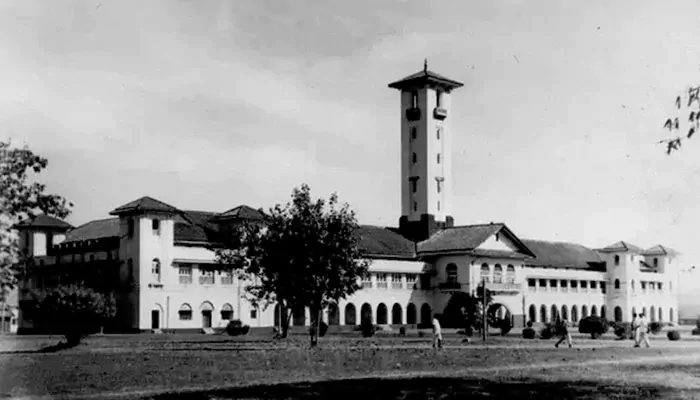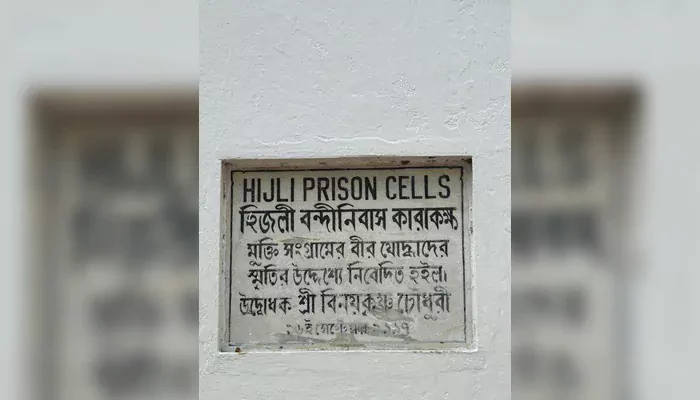
Few know that Shaheed Bhavan at IIT Kharagpur once held India’s freedom fighters behind bars.
Several places around us carry stories from the past that most people walk by without ever knowing. Shaheed Bhavan inside the IIT Kharagpur campus is one such place. Today, it’s home to the Nehru Museum of Science and Technology, where visitors come to see models, exhibits, and India’s journey in science. But few know that this building once was a British detention camp during the colonial era. And during that time, it was known as the infamous Hijli Detention Camp.
That red-bricked structure in IIT Kharagpur campus (now home to the Nehru Museum of Science and Technology) was once the Hijli Detention Camp, a colonial prison where British authorities held India’s revolutionaries. Nearly a century ago, this building brimmed with voices demanding freedom. It was a site of suffering, and ultimately, transformation. How did this symbol of colonial oppression become one of India’s premier institutes of learning? Well, the story of Hijli is about India's turbulent past and its resilient future.
The story begins in the early 1930s, when Bengal was full of revolutionary fervour. Movements like the Chittagong Armoury Raid had shaken the colonial administration, and the prisons were filling fast with political detainees. To contain this surge, the British Raj began setting up special detention camps, away from the public eye, to isolate nationalist revolutionaries. One such facility was established in the town of Hijli, near Kharagpur, in what was then the undivided Midnapore district of Bengal.

Interestingly, the structure wasn’t originally intended to be a prison. It had been built as part of a grand plan to establish Hijli as the headquarters of a new district. When that idea was shelved, the British repurposed the sprawling Byzantine-style building with its central watchtower, high arched corridors, and iron-barred cells into a prison. Thus was born the Hijli Detention Camp.

Unlike traditional jails, Hijli was used primarily for preventive detention. Many of the inmates were young students, writers, and activists involved in anti-colonial movements. During the day, the prisoners were allowed to mingle in the courtyard, play games, or even organize small theatre performances. But each night, they were locked back into the stone cells, guarded by watchful eyes. Despite the relatively open-day structure, escape was near impossible... although a handful of daring prisoners once managed it, prompting stricter measures.
Hijli’s darkest chapter came on the morning of September 16, 1931. Without warning, British guards opened fire on unarmed detainees inside the prison compound. Two young revolutionaries, Santosh Kumar Mitra and Tarakeswar Sengupta, were killed in the firing.
To this day, the exact reasons behind the firing remain debated. Official British accounts claimed it was in response to unrest, but several Indian leaders and eyewitnesses contested this version, describing it as a cold-blooded act of provocation. Regardless of the justification, the incident sparked a wave of outrage across the country.

Subhas Chandra Bose, who was then the mayor of Calcutta, led a series of protest marches and strongly condemned the killings. Rabindranath Tagore, deeply shaken, wrote about the incident with sorrow and anger. "Such brutality can only lead to greater resistance," he warned.
The Hijli firing became a symbol of the unjust violence inflicted on India's youth, and added fuel to the freedom movement.
After India gained independence in 1947, the newly formed government faced the enormous task of nation-building. One of Prime Minister Jawaharlal Nehru’s visions was to create institutions that would shape the future of modern India. As part of this vision, the first Indian Institute of Technology (IIT) was established in 1951.
And it was set up right on the grounds of the former Hijli Detention Camp.
On 18 August, 1951 Maulana Abul Kalam Azad, the then education minister of India, inaugrated the first IIT at erstwhile Hijli detention camp building in Kharagpur. #heritage #history #education #education_minister #photograph @iamrana @DalrympleWill @INCIndia @IITKgp pic.twitter.com/oLBvmZwFK5
— Heritage Times (@HeritageTimesIN) May 6, 2019
(Credit: Heritage Times)
It was a decision steeped in symbolism. From a site where voices of freedom were once silenced would now emerge a new generation of thinkers, engineers, and innovators. The building that once caged rebels would now cultivate researchers. The main administrative building of IIT Kharagpur, Shaheed Bhavan, still retains the architecture of the original prison. But its interiors are now filled with exhibits showcasing India's scientific progress, as part of the Nehru Museum of Science and Technology. Among its displays are also tributes to the freedom fighters who were once held there, ensuring that their stories are not lost in time.
Nehru visited MIT in 1949. Nehru convocation speech in 1956 at IIT-Kharagpur, "Here in the place of that Hijli Detention Camp stands this fine monument of India to-day representing India’s urges, India’s future in the making" pic.twitter.com/2feGfRvDjA
— Tushar Sharma 🐇 (@tshrocks) November 19, 2021
(Credit: Tushar Sharma)
Hijli is a reminder of how the past and present can coexist in powerful ways. Every year, thousands of students walk through the campus of IIT Kharagpur, many unaware that their classrooms and canteens stand on ground where revolution once brewed.
Places like Hijli challenge us to think about how memory is preserved, and how spaces can be transformed without erasing their histories. As historian Partha Chatterjee once said, “The past never entirely disappears; it remains embedded in the walls, in the stones, in the silences of places.”